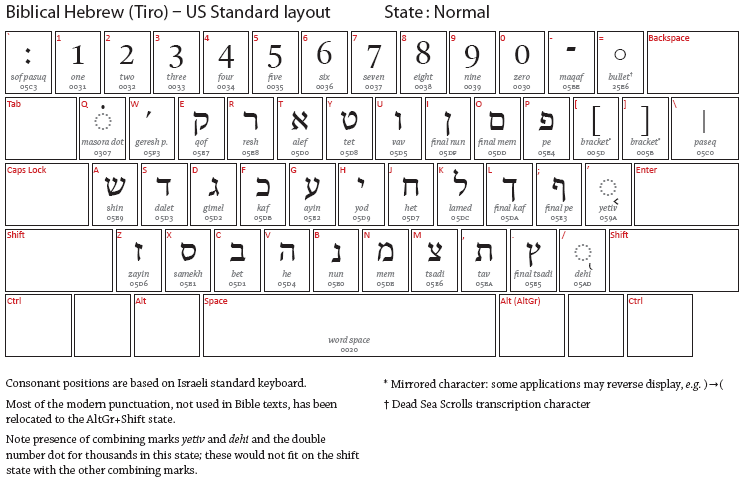

Would necessarily require much more jumbled and harder to Separate class that need to be keyed after other below marks, so Not quite everything fits, but theĮxceptions are the postpositional left below marks, which are a That all above marks are in the top two rows and all below marksĪre in the bottom two rows. Principle that the arrangement of marks on the keyboardĬorresponds to their arrangement relative to a base letter, so The entire shift state of the Tiro keyboard is based on the This is what was missing in existing Hebrew keyboard layouts. Learnable and intuitive layout for both nikud and te'amim, since Wanted to make a keyboard (Tiro) that would provide an easily Is the presence of the te'amim and other Biblical only marks: I Ken? Where is Nikud "included in the standard Israeli keyboard"?īut, yes, would require a nbew keyboard to be made. What are "the same keys as the Israeli keyboard" in your first sentence, Number keyboard is "modern punctuation" as your second sentence indicatres. My number keyboard using the Israeli keyboard is numbers, and my shift "Modern punctuation: as on the Israeli layout (shifted number row)." Suggest these be placed on the same keys as the Israeli keyboard, but in a These are included in the standard Israeli keyboard, and therefore I "The next most common characters typed are the sin/shin dot, dagesh, and Nikud, which I pulled from the Symbol chart, to short-cut keys.
SBL HEBREW FONT PDF PDF
If I were to send you a PDF form layout in which you could assign Unicode values to keys, would you be interested in doing this? Alternatively, you could build your own layout using the MS Keyboard Layout Editor, which is quite easy to learn.Īm I missing something? Since when is it possible to type in Nikudĭirectlly using the Windows Israeli keyboard? I've had to assign all the
SBL HEBREW FONT PDF DRIVER
I'm happy to build the driver for such a layout, but I would ask someone else to design it. Some would need to be moved to the shift+altgr state.

Not quite everything fits, but the exceptions are the postpositional left below marks, which are a separate class that need to be keyed after other below marks, so are logically separate.Ī keyboard such as you describe would necessarily require much more jumbled and harder to remember input for te'amim. The entire shift state of the Tiro keyboard is based on the principle that the arrangement of marks on the keyboard corresponds to their arrangement relative to a base letter, so that all above marks are in the top two rows and all below marks are in the bottom two rows. The problem is the presence of the te'amim and other Biblical only marks: I wanted to make a keyboard (Tiro) that would provide an easily learnable and intuitive layout for both nikud and te'amim, since this is what was missing in existing Hebrew keyboard layouts. This is all possible but, yes, would require a nbew keyboard to be made.


 0 kommentar(er)
0 kommentar(er)
